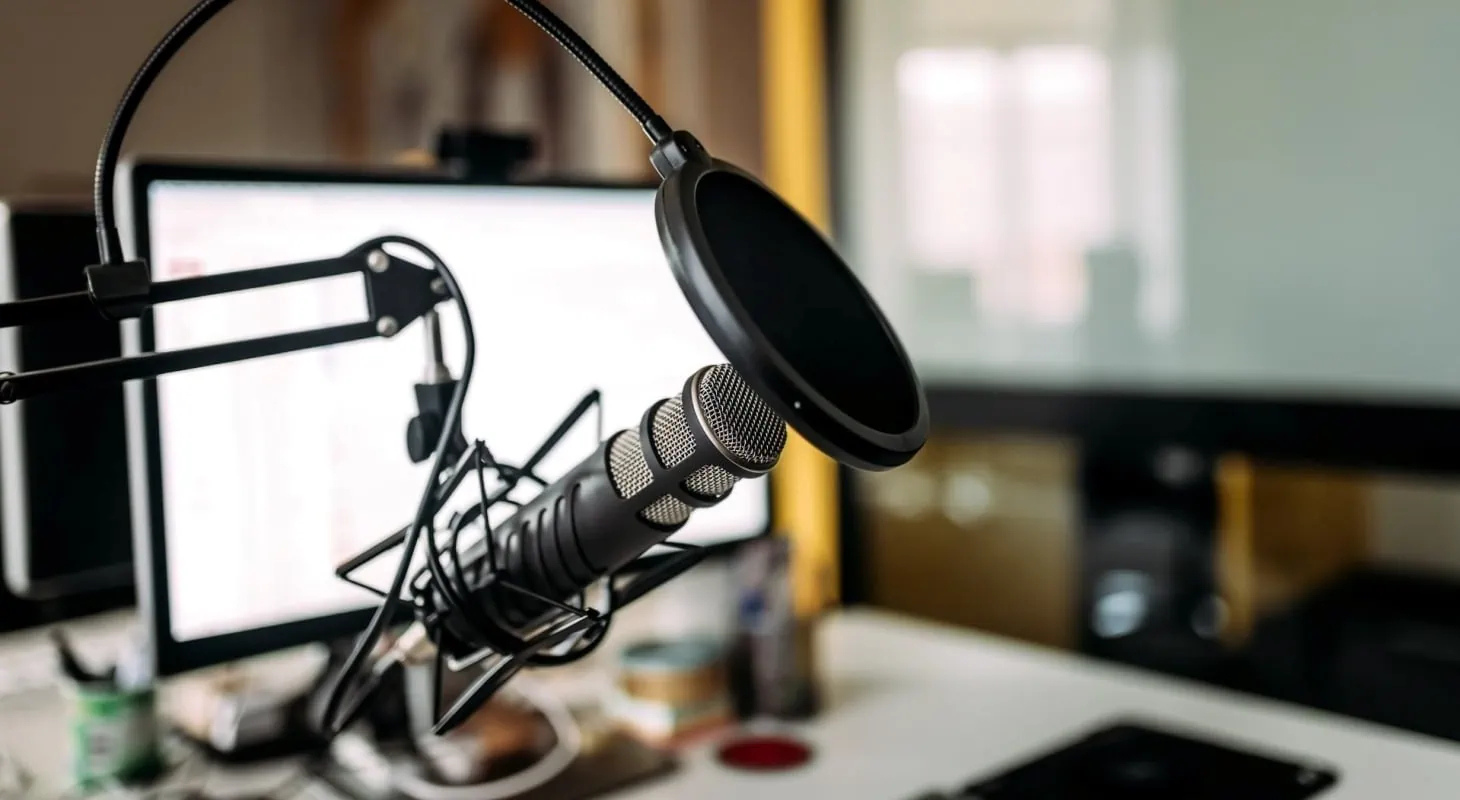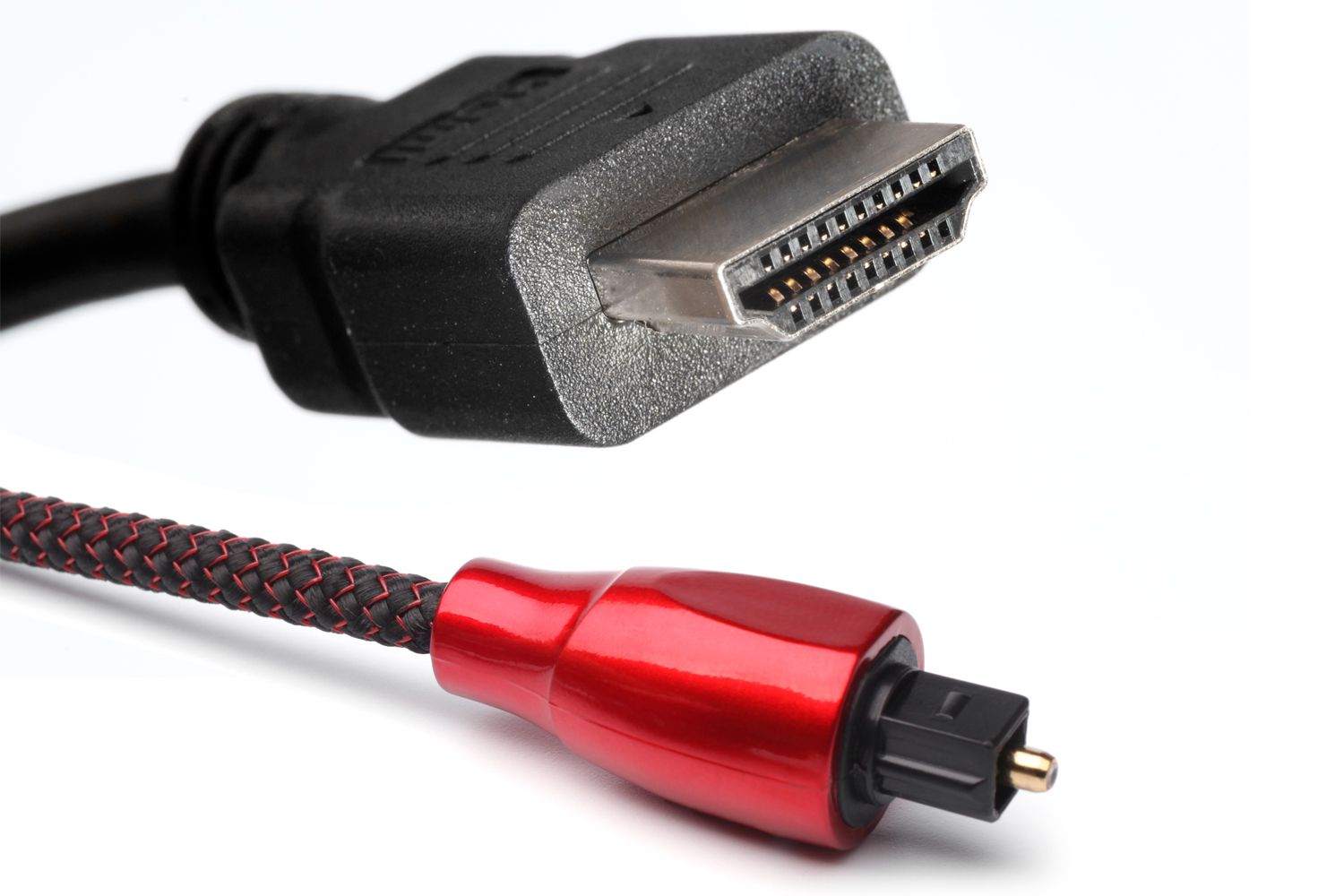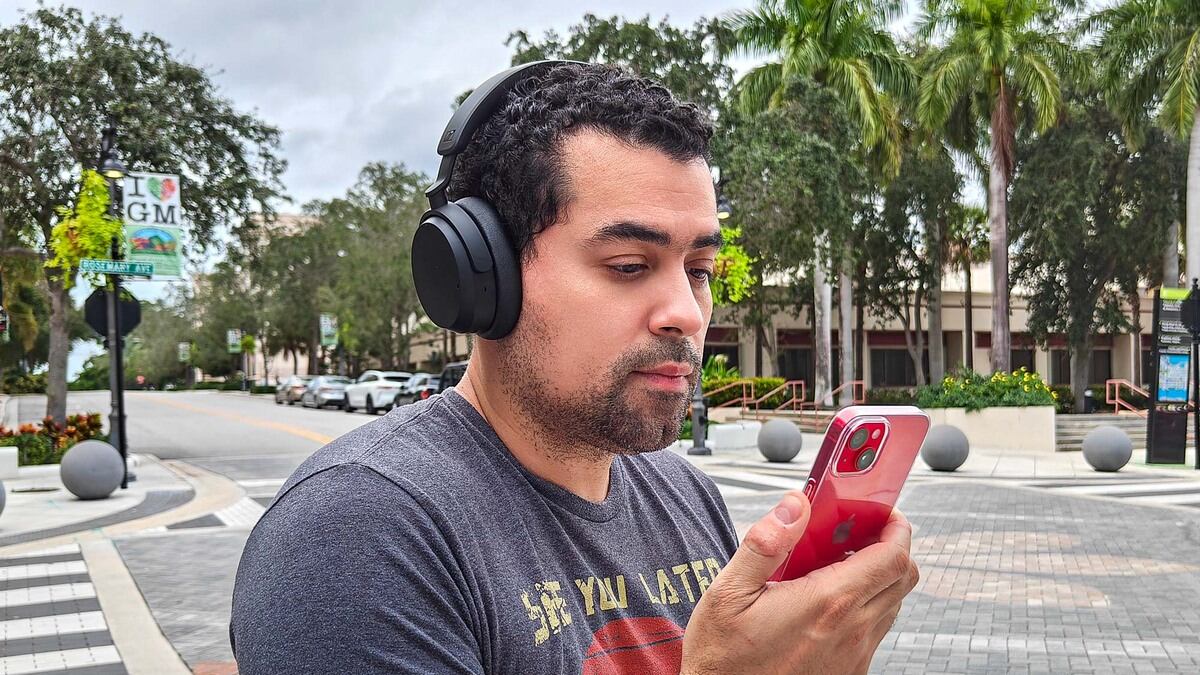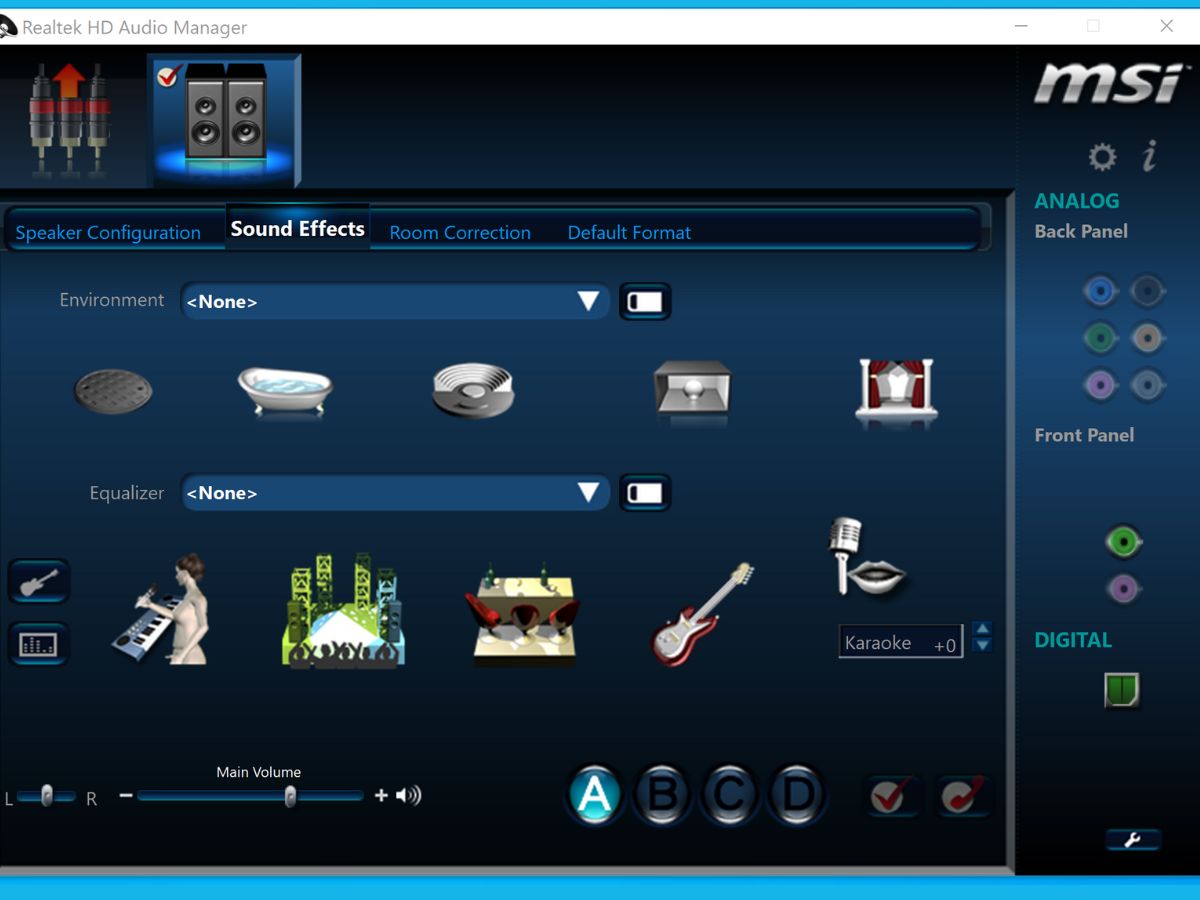Home>Devices & Equipment>Microphone>How To Make Microphone Quality Better


Microphone
How To Make Microphone Quality Better
Published: February 16, 2024
Learn how to improve your microphone quality with our expert tips and tricks. Enhance your audio recordings and sound professional with our microphone improvement guide. Discover the best techniques for better microphone performance now!
(Many of the links in this article redirect to a specific reviewed product. Your purchase of these products through affiliate links helps to generate commission for AudioLover.com, at no extra cost. Learn more)
Table of Contents
Introduction
Understanding the Importance of Microphone Quality
A high-quality microphone is an essential tool for capturing clear and professional audio in various settings, such as recording studios, live performances, podcasts, and video production. The quality of a microphone significantly impacts the overall sound output, making it a critical factor for achieving optimal audio results. Whether you are a content creator, musician, podcaster, or voiceover artist, the quest for better microphone quality is a common pursuit.
The quality of a microphone is determined by its ability to accurately capture sound with minimal distortion, noise, and interference. A superior microphone can faithfully reproduce the nuances of a voice or musical instrument, resulting in a rich and detailed audio recording. Conversely, a low-quality microphone may introduce unwanted artifacts, muddiness, or harshness to the sound, detracting from the overall listening experience.
In the digital age, where content creation and communication rely heavily on audio and video mediums, the significance of microphone quality cannot be overstated. From virtual meetings to music production, the demand for clear and pristine audio has surged, prompting individuals and professionals alike to seek methods for enhancing microphone performance. Fortunately, there are various strategies and techniques that can be employed to elevate microphone quality and achieve outstanding audio recordings.
In the following sections, we will delve into the nuances of microphone quality and explore practical tips for improving the performance of your microphone. Whether you are aiming to refine your podcasting setup, optimize your vocal recordings, or elevate the sound quality of your videos, the insights shared in this article will equip you with the knowledge and tools to enhance your microphone quality and elevate your audio productions.
Understanding Microphone Quality
Microphone quality encompasses several key factors that contribute to the overall performance and fidelity of audio capture. Understanding these factors is essential for discerning the capabilities and limitations of different microphones, enabling users to make informed decisions when selecting, using, and optimizing their audio equipment.
One of the fundamental aspects of microphone quality is its frequency response, which refers to the microphone’s ability to capture a wide range of frequencies accurately. A microphone with a flat frequency response reproduces sounds across the audible spectrum with minimal coloration, making it suitable for capturing diverse audio sources faithfully. On the other hand, microphones with tailored frequency responses, such as those optimized for vocal recordings or instrument miking, exhibit specific tonal characteristics that can enhance or alter the sound in a desired manner.
Sensitivity is another crucial attribute of microphone quality, indicating the microphone’s responsiveness to sound pressure levels. High-sensitivity microphones can capture subtle details and nuances with precision, making them suitable for capturing quiet or distant sound sources. Conversely, low-sensitivity microphones are less prone to distortion when recording loud sound sources, offering greater headroom for handling high sound pressure levels without clipping or distorting the audio signal.
Furthermore, the signal-to-noise ratio (SNR) of a microphone is a key determinant of its quality, representing the ratio of the desired sound signal to the inherent noise produced by the microphone itself. A high SNR indicates that the microphone can capture clean and clear audio with minimal self-noise, ensuring that the recorded sound is free from unwanted hiss or hum. This attribute is particularly crucial for capturing delicate audio passages and achieving pristine recordings with minimal background noise.
Additionally, the transient response of a microphone influences its ability to accurately capture fast transients and rapid changes in sound, such as the attack of a drum hit or the pluck of a guitar string. Microphones with excellent transient response can faithfully reproduce the dynamic nuances of musical performances and percussive sounds, preserving the natural timbre and articulation of the audio source.
By comprehending these fundamental aspects of microphone quality, individuals can make informed decisions when selecting a microphone for specific applications and employ targeted strategies to optimize the performance of their existing microphones. In the subsequent sections, we will explore actionable tips and techniques for improving microphone quality, empowering users to elevate their audio recordings and productions.
Tips for Improving Microphone Quality
Enhancing the quality of your microphone recordings involves a combination of technical adjustments, strategic equipment choices, and environmental considerations. By implementing the following tips, you can elevate the performance of your microphone and achieve exceptional audio results across various applications.
-
Optimize Microphone Placement: Positioning the microphone correctly in relation to the sound source is crucial for capturing clear and balanced audio. Experiment with microphone placement to find the optimal distance and angle that yields the best sound quality for your specific recording scenario.
-
Use a Pop Filter: When recording vocals, employing a pop filter can mitigate plosive sounds and reduce the impact of breath noises on the microphone, resulting in cleaner and more intelligible vocal recordings.
-
Minimize Ambient Noise: Creating a quiet recording environment by reducing background noise and reverberation can significantly enhance microphone performance. Utilize acoustic treatments, soundproofing, or noise reduction techniques to minimize unwanted environmental noise during recordings.
-
Employ Proper Gain Staging: Setting appropriate input levels and gain staging ensures that the microphone signal is amplified optimally without introducing distortion or noise. Avoid overloading the microphone preamp and aim for a healthy signal-to-noise ratio to preserve the integrity of the audio signal.
-
Invest in Quality Cables: Using high-quality cables with good shielding properties minimizes signal degradation and interference, contributing to cleaner and more reliable audio transmissions from the microphone to the recording interface or mixer.
-
Consider External Preamps: Incorporating an external microphone preamplifier can provide enhanced gain, sonic character, and tonal shaping capabilities, allowing for greater control and refinement of the microphone signal before it reaches the recording device.
-
Monitor and Adjust Microphone Settings: Regularly monitor and adjust the microphone settings, such as polar patterns, high-pass filters, and pad switches, to optimize the microphone’s response to different sound sources and recording conditions.
-
Implement Post-Processing Techniques: Utilize audio post-processing tools, such as equalization, compression, and noise reduction, to fine-tune the recorded audio and address any imperfections or tonal inconsistencies, enhancing the overall clarity and balance of the microphone recordings.
By incorporating these tips into your microphone usage and recording practices, you can effectively enhance the quality and fidelity of your audio recordings, unlocking the full potential of your microphone for diverse creative endeavors.
Adjusting Microphone Settings
Optimizing the settings of your microphone is a pivotal step in maximizing its performance and tailoring its response to specific recording scenarios. Whether you are using a condenser microphone, dynamic microphone, or ribbon microphone, understanding and adjusting the microphone settings can significantly impact the quality and character of the captured audio. Here are key considerations for adjusting microphone settings to achieve optimal results:
-
Polar Patterns: Many microphones feature selectable polar patterns, such as cardioid, omnidirectional, figure-8, and variations thereof. Choosing the appropriate polar pattern based on the sound source and desired pickup characteristics is essential for controlling off-axis sound rejection, minimizing ambient noise, and capturing sound sources with precision.
-
High-Pass Filters: Some microphones are equipped with high-pass filters that attenuate low-frequency content below a specified cutoff point. Engaging the high-pass filter can help mitigate rumble, handling noise, and low-frequency ambient vibrations, contributing to a cleaner and more focused audio capture.
-
Pad Switches: Certain microphones offer pad switches that attenuate the microphone’s sensitivity to high sound pressure levels, preventing overload and distortion when recording loud sources. Activating the pad switch when capturing loud instruments or vocals can ensure that the microphone accurately captures the sound without introducing unwanted distortion.
-
Gain Control: Adjusting the microphone’s gain or input level is crucial for optimizing the signal-to-noise ratio and preventing clipping or underutilization of the available headroom. Carefully setting the microphone gain ensures that the recorded audio maintains a healthy dynamic range and fidelity without encountering noise or distortion issues.
By familiarizing yourself with the available settings on your microphone and understanding their impact on audio capture, you can tailor the microphone’s response to suit the specific requirements of each recording session. Experimenting with different settings and observing their effects on the audio can provide valuable insights into harnessing the full potential of your microphone and achieving exceptional sound quality.
Using External Equipment
Augmenting your microphone setup with external equipment can significantly enhance its capabilities and refine the quality of audio recordings. Whether you are aiming to elevate the clarity of vocal performances, capture pristine instrument recordings, or optimize the sound for podcasting and broadcasting, integrating external equipment can offer valuable sonic improvements. Here are key considerations for utilizing external equipment to complement and enhance your microphone setup:
-
Microphone Preamps: Incorporating a dedicated microphone preamplifier can impart additional gain, sonic character, and tonal shaping capabilities to the microphone signal before it reaches the recording device. High-quality preamps can elevate the clarity, detail, and warmth of the audio, enriching the sonic characteristics captured by the microphone.
-
Audio Interfaces: Utilizing a high-fidelity audio interface with advanced analog-to-digital conversion capabilities can elevate the resolution and accuracy of the recorded audio, ensuring that the nuances and subtleties of the microphone signal are faithfully preserved in the digital domain. Additionally, audio interfaces with low-latency monitoring enable real-time monitoring of the microphone signal with minimal delay, facilitating precise performance and recording techniques.
-
External Equalizers and Processors: Introducing external equalizers, compressors, and other signal processors into the recording chain empowers users to shape and refine the tonal characteristics of the microphone signal, address dynamic inconsistencies, and enhance the overall balance and coherence of the audio recordings.
-
Phantom Power Supplies: For condenser microphones that require phantom power, utilizing a reliable and clean phantom power supply is essential for ensuring stable and consistent operation of the microphone, preventing potential audio artifacts or performance issues associated with inadequate phantom power delivery.
By strategically integrating external equipment into your microphone setup, you can expand the sonic possibilities, elevate the fidelity of your audio recordings, and unlock new creative avenues for capturing and shaping sound. The judicious application of external equipment tailored to your specific recording needs can yield remarkable improvements in microphone performance and contribute to the production of exceptional audio content.
Recording Environment
The recording environment plays a pivotal role in shaping the quality and fidelity of microphone recordings. Creating an acoustically favorable and controlled environment is essential for minimizing unwanted noise, reflections, and sonic imperfections, allowing the microphone to capture sound with clarity and precision. Here are key considerations for optimizing the recording environment to enhance microphone performance:
-
Acoustic Treatment: Implementing acoustic treatment, such as sound-absorbing panels, diffusers, and bass traps, can mitigate reflections, flutter echoes, and standing waves within the recording space, fostering a more neutral and controlled acoustic environment for capturing audio. This contributes to clearer and more defined recordings with reduced coloration from room-induced artifacts.
-
Soundproofing: Minimizing external noise intrusion through soundproofing measures, such as sealing gaps, using heavy drapes, and isolating the recording space from external sources of noise, ensures that the microphone captures the intended sound sources without interference from environmental disturbances.
-
Optimal Room Selection: Choosing an appropriate room for recording, such as one with minimal ambient noise, favorable acoustics, and adequate space for accommodating the recording setup, is crucial for achieving high-quality microphone recordings. Selecting a room with minimal reverberation and sonic anomalies contributes to cleaner and more transparent audio capture.
-
Microphone Isolation: Employing microphone isolation shields or reflection filters can minimize the impact of room reflections and ambient noise on the microphone, allowing for more focused and direct capture of the sound source while reducing coloration from the surrounding environment.
By optimizing the recording environment to provide a conducive and controlled acoustic space, you can enhance the performance and fidelity of your microphone recordings, ensuring that the captured audio is free from unwanted artifacts and sonic aberrations. Thoughtful consideration of the recording environment and the implementation of acoustic treatments can yield significant improvements in the overall quality and clarity of microphone recordings, contributing to exceptional audio productions.
Conclusion
Improving the quality of microphone recordings is a multifaceted endeavor that encompasses technical adjustments, equipment choices, and environmental considerations. By understanding the nuances of microphone quality and implementing targeted strategies, individuals can elevate the performance and fidelity of their microphones, unlocking the potential to capture exceptional audio across diverse applications.
Optimizing microphone quality involves a combination of technical adjustments, such as optimizing microphone placement, employing pop filters, and employing proper gain staging, as well as strategic equipment choices, including the integration of external preamps, audio interfaces, and signal processors to enhance the sonic characteristics of the microphone recordings. Furthermore, creating an acoustically favorable recording environment through the implementation of acoustic treatment, soundproofing, and microphone isolation contributes to cleaner, more transparent audio capture with minimal environmental interference.
By incorporating these insights and techniques into their microphone usage and recording practices, individuals can elevate the quality and fidelity of their audio productions, whether they are engaged in music recording, podcasting, voiceover work, or video production. The pursuit of better microphone quality is a journey that requires a keen understanding of microphone attributes, a discerning approach to adjusting microphone settings, and a conscientious effort to optimize the recording environment for superior audio capture.
Ultimately, the quest for better microphone quality is fueled by a passion for sonic excellence and a commitment to delivering compelling, pristine audio experiences. As technology continues to evolve and creative endeavors flourish, the ability to harness the full potential of microphones through informed techniques and thoughtful considerations will undoubtedly lead to remarkable advancements in audio production and storytelling.











